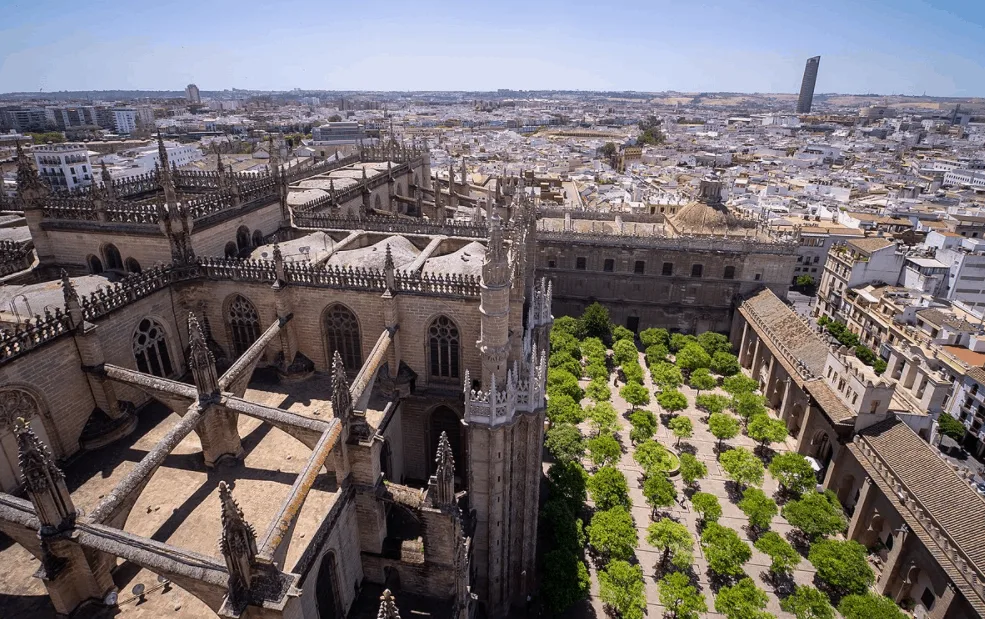One of the most remarkable bell towers in the world can be found standing next to the Cathedral of Seville.
In this post, you’ll discover the ultimate list of facts about the Giralda, a marvelous tower in the south of Spain.
1. It’s part of one of the most amazing churches in Europe
The Giralda is the bell tower of one of the most amazing churches in the world, the Cathedral of Seville in the south of Spain. This Gothic church was built over a period of 127 years between 1401 and 1528.
The cathedral is world-famous for its enormous size and it was by far the largest cathedral in the world upon completion. It has a length of 126 meters (413 feet), a width of 76 meters (249 feet), and a height of 42 meters (138 feet).
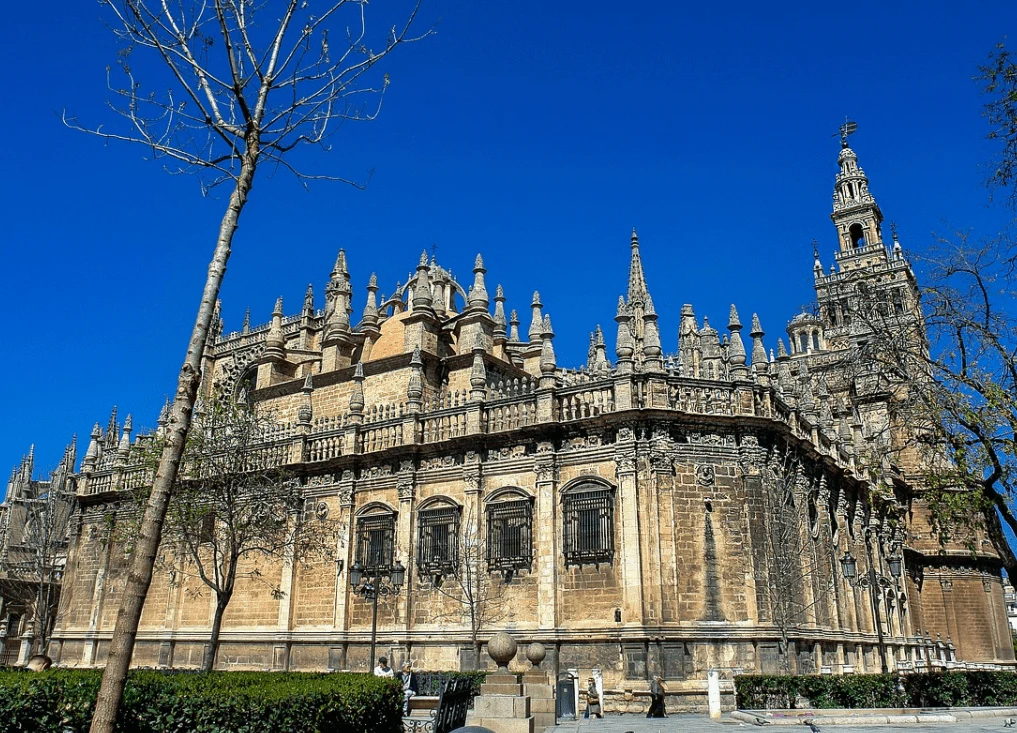
2. What does “La Giralda” mean?
La Giralda refers to the statue on top of the Seville Cathedral which serves its purpose as a weather vane. The literal translation of “Giralda” is “she who turns” and is a direct reference to the weather vane as the wind changes direction.
The statue is called “El Giraldillo” and was installed in the year 1568 to represent the strength of the Christian Faith.
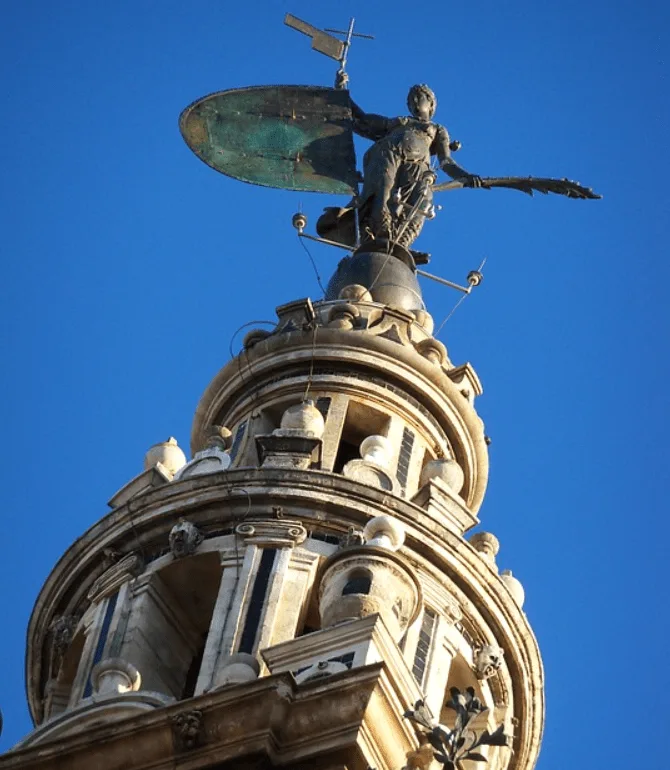
3. The tower is as high as a skyscraper
The Giralda has been the symbol of the city of Seville for over 800 years and that’s mainly because of its height. The tower itself stands 98.5 meters (323 feet) tall and reaches 104.1 meters (342 feet) with the statue on top of it included.
This means that this amazing tower, which dates back to the Middle Ages, is actually officially as tall as a skyscraper (buildings above 100 meters (328 feet) are considered skyscrapers).
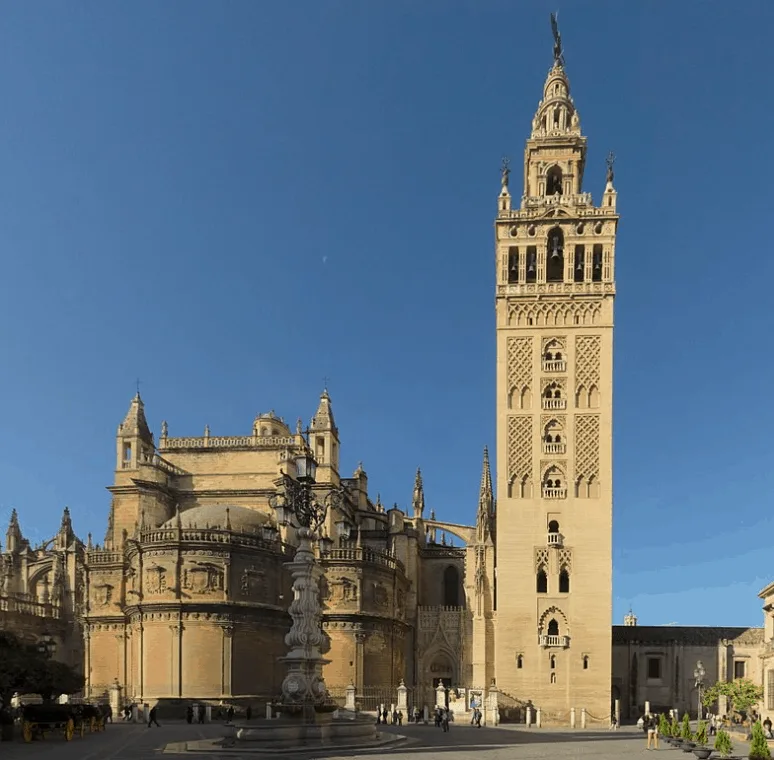
4. The tower was built on very a solid foundation
While the soil in Seville is definitely better suited to support tall towers than the soil that the Leaning Tower of Pisa was built on, the engineers also did a much better job to ensure that the Giralda was built on a solid foundation.

The base of the tower is a square of 13.7 meters (44.94 feet), which is just 1.7 meters (5.57 feet) wider than the base of Big Ben in London, was built on top of a 16 meters (19.68 feet) square foundation of which goes 5 meters (16.4 feet) deep into the ground.
This resulted in the tower being earthquake-proof as it’s the only of the original buildings on the site that still stands.
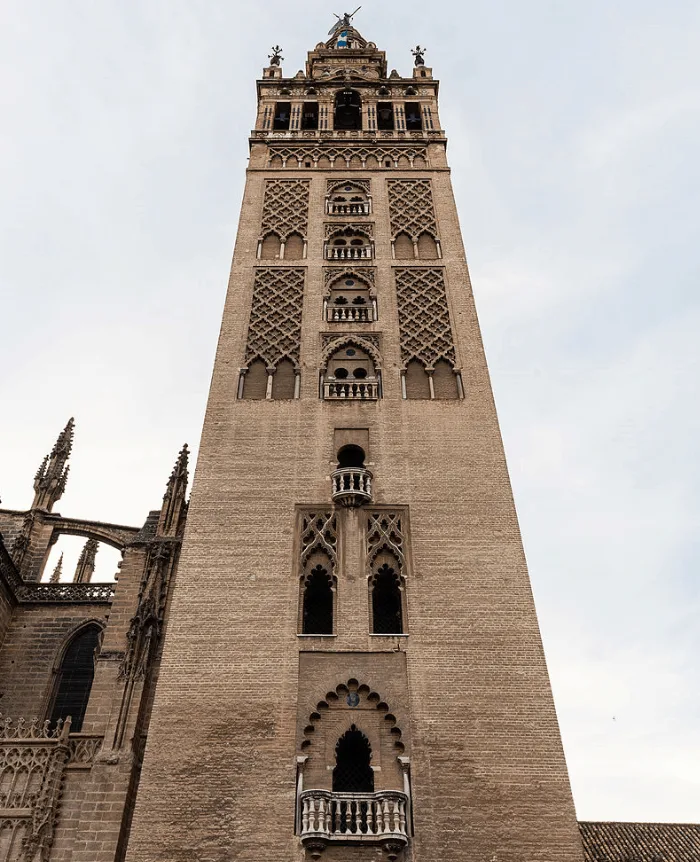
5. It was originally part of the Seville Mosque
One of the most remarkable facts about the Giralda is that it was originally part of the Seville Mosque as the city as part of the Almohad Caliphate in the 12th century. This mosque was commissioned by caliph Abu Ya’qub Yusuf in the year 1171 and completed just 5 years later in 1176.
It wasn’t, however, until the year 1184 that the tower was commissioned and eventually completed on March 10, 1198, after a series of delays that stalled the construction.
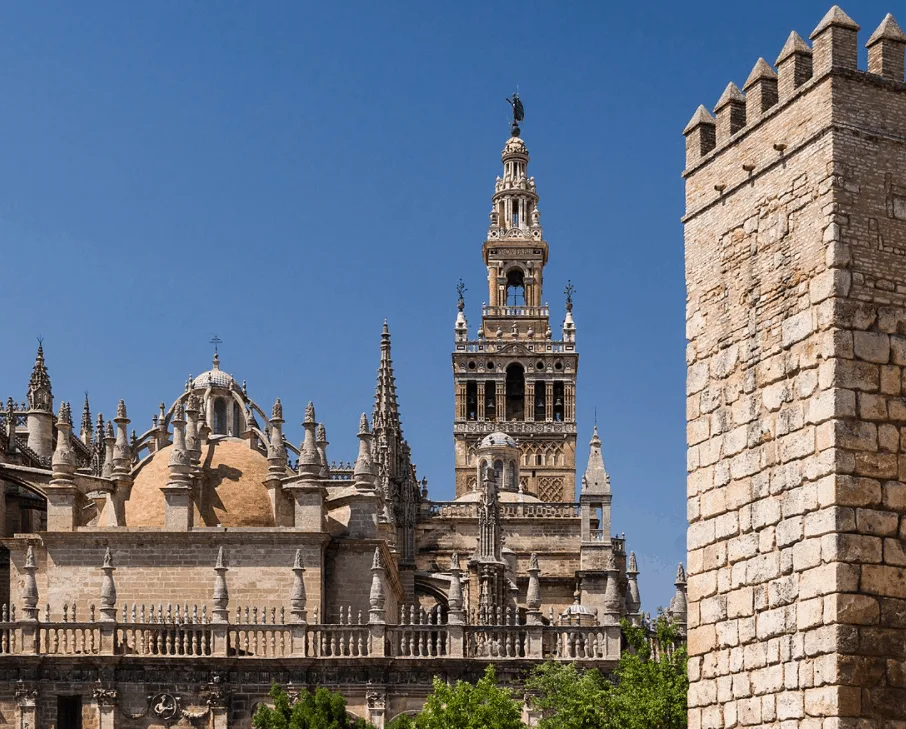
6. The Giralda was built as a minaret
Because it was part of the Seville Mosque, a massive structure at the time that had dimensions of 113 by 135 meters (371 × 443 feet) and covered an area of 15,000 square meters (160,000 square feet), it wasn’t a bell tower initially but a minaret.
The top of the tower was decorated with metal spheres, which were made of either bronze or gold, and commemorated the al-Mansur’s victory over Alfonso VIII of Castile in 1194.
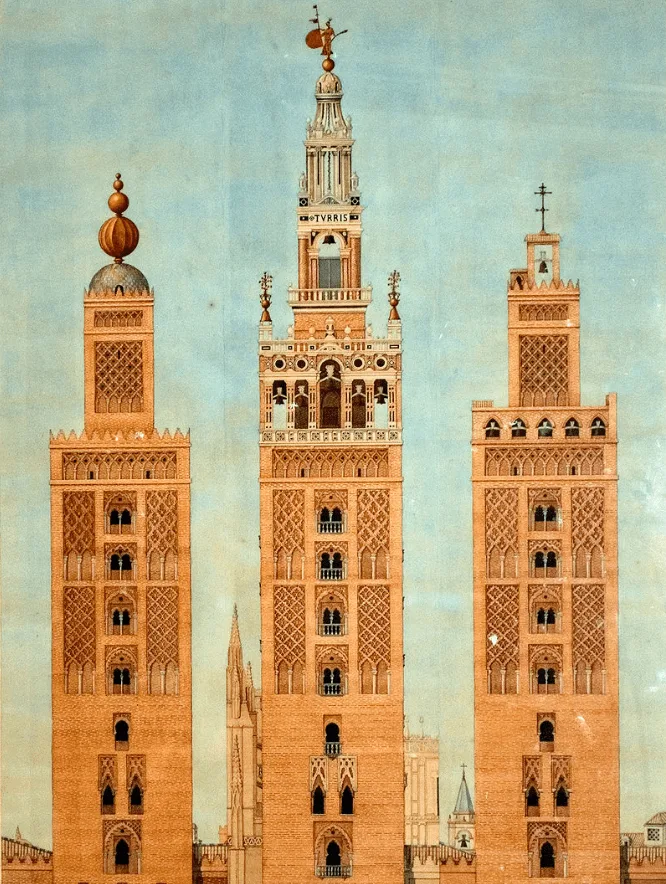
7. The tower became part of the cathedral in the 13th century
The Christian reconquest also referred to as the “Reconquista,” happened in the year 1248. The purpose of the mosque was changed and the structure was transformed into a Christian cathedral.
This also means that the Giralda was transformed from a minaret into a bell tower and the metal spheres were removed and replaced with a Christian Cross.

8. It was possible to go to the top of the tower by horse
The tower was completed with locally manufactured bricks and marble that was extracted from earlier buildings. The core of the tower consists of several vaulted rooms and a ramp with 35 segments surrounding it.
One of the most fascinating facts about the Giralda is that this ramp allowed “beasts of burden, people, and custodians” to travel to the top of the tower. This means that you could go to the top without having to get off your horse!
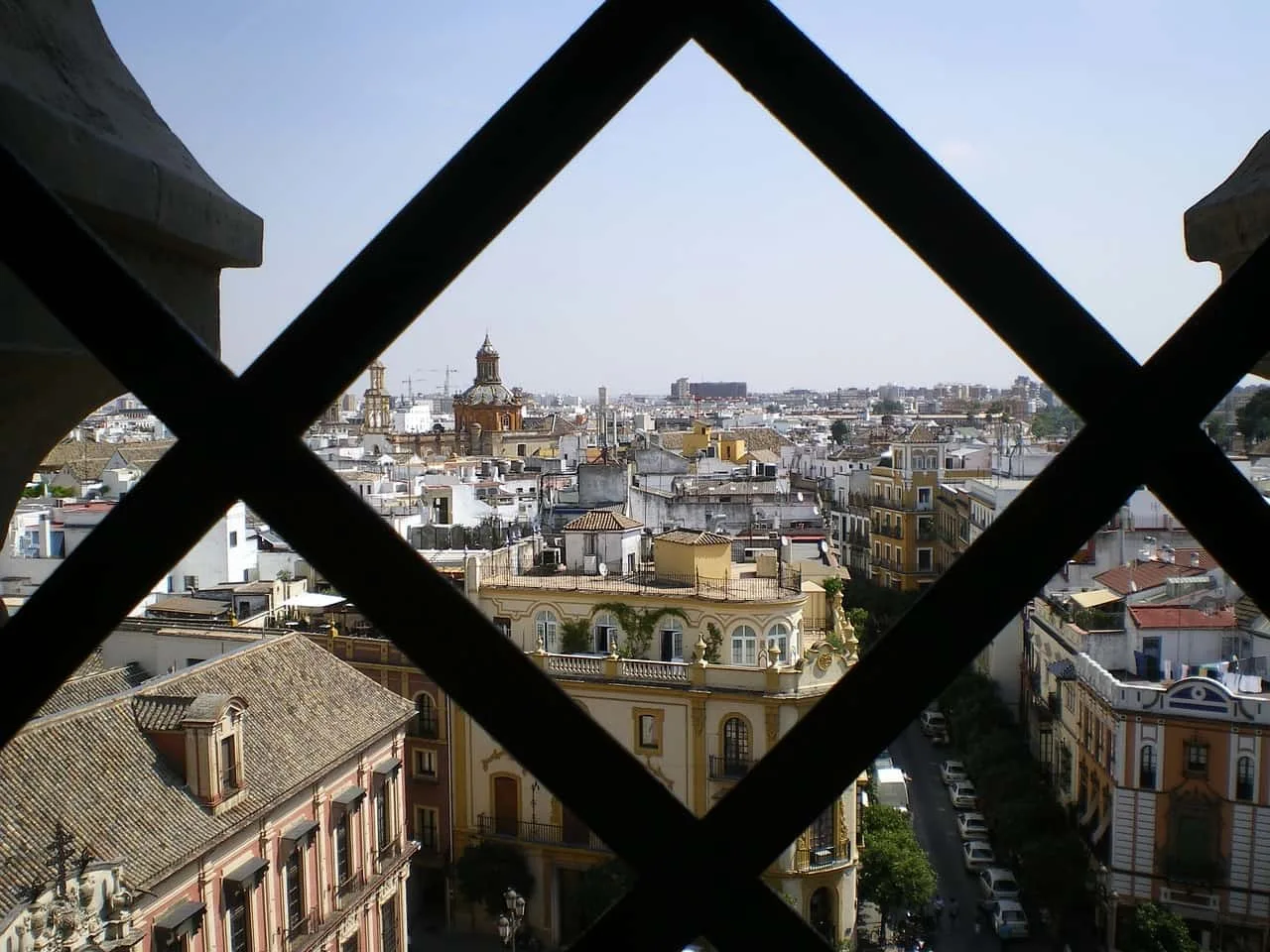
9. The church was destroyed, but the original Giralda still stands
The original mosque was initially converted to a cathedral in 1248 but nothing was done with it afterward. This resulted in the building being neglected for the next 2 centuries until the construction of the current cathedral started in 1401.
On top of that, a severe earthquake damaged the structure in 1356, flattening large parts of the original mosque. Remarkable, the original Giralda wasn’t destroyed and still stands today!
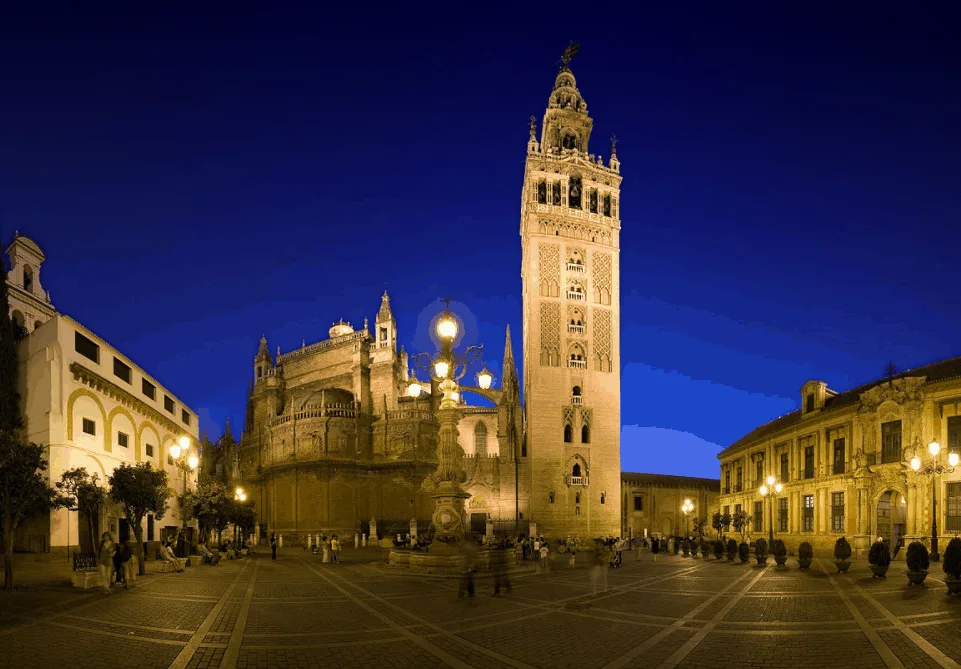
10. The tower was built higher during the Renaissance
Even though Seville Cathedral was completed in the year 1528, the Giralda didn’t look as it does today upon its completion. Only the metal spheres that once commemorated a great victory by the Moors were replaced with a Christian cross.
It wasn’t until 4 decades later, in the year 1568, that local Spanish Renaissance architect Hernán Ruiz the Younger was engaged to build an addition to the tower which included the statue of the Giralda.
In this addition to the tower, we can find Seville’s motto which reads “NO8DO,” spoken as “No me ha dejado.” This refers to words spoken by Alfonso X of Castile during the 13th century after Seville still supported his reign when there was a revolution going on.
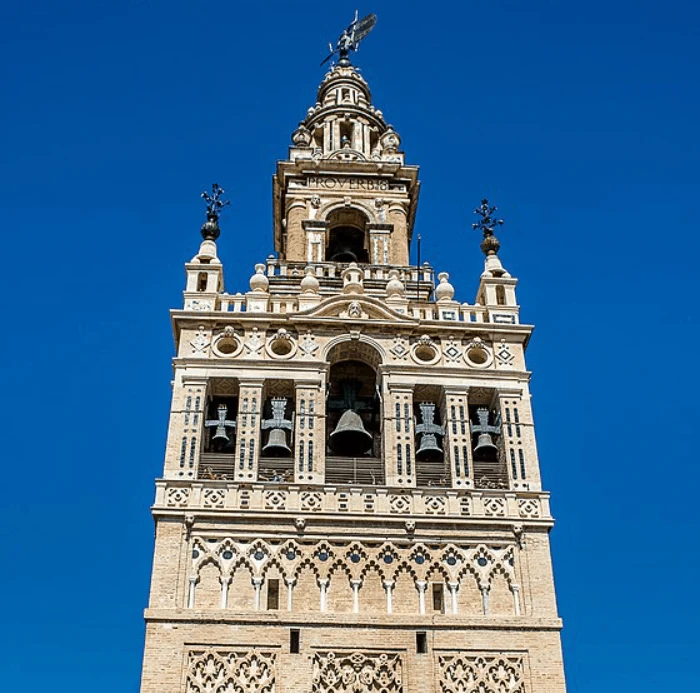
11. It has been the inspiration for numerous towers and buildings
The Giralda isn’t just the ultimate symbol of the city of Seville and has been for hundreds of years, it has also been the inspiration for countless buildings all across the world.
Some of the most notable examples are:
- The clock tower of the Ferry Building in San Francisco (1898).
- The Wrigley Building in Chicago (1920).
- The Freedom Tower in Miami (1925).
- The Terminal Tower in Cleveland (1930).
- The Seven Sisters in Moscow (1947-1953)
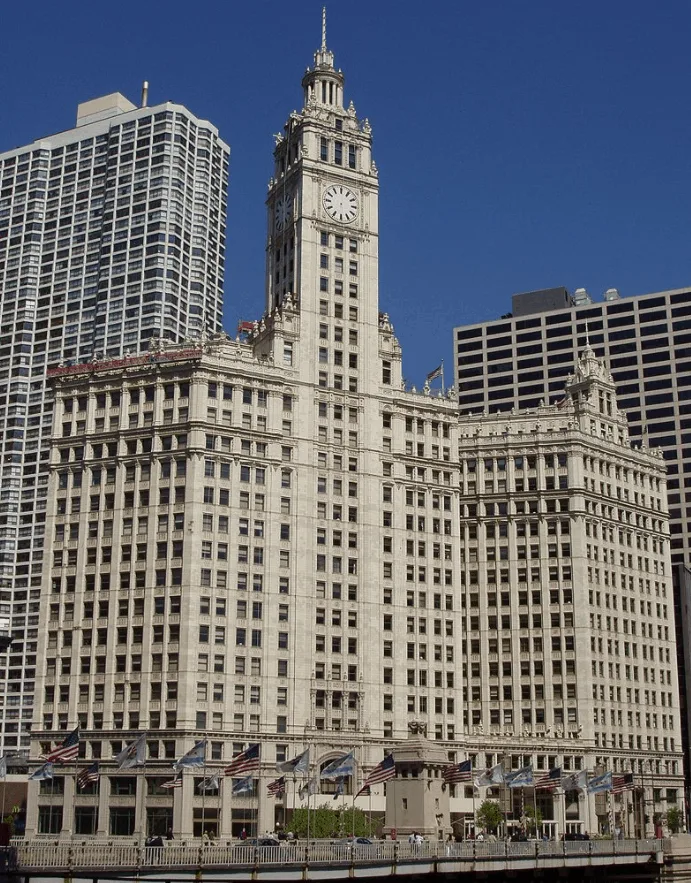
12. You can climb the tower and get stunning views of Seville
Want to get some of the most amazing views of the largest city in Andalusia in the south of Spain?
Then make sure to climb the tower all the way to the top as you won’t just get a clear view of how massive the Seville Cathedral really is, but also get an amazing view of this fascinating city!
